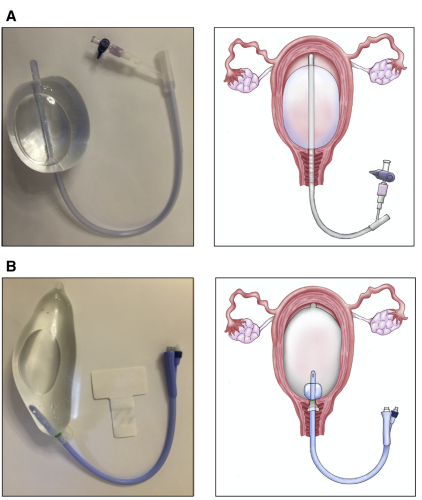The effectiveness of using uterine tampons in treating uterine atony
DOI:
https://doi.org/10.31943/gw.v14i3.419Keywords:
Atonia Uteri, Tamponade Uterus, Perdarahan PostpartumAbstract
Postpartum hemorrhage is excessive bleeding that occurs after delivery due to blood loss of 500 mL in a standard delivery or 1,000 mL in a cesarean delivery. Postpartum hemorrhage is divided into primary and secondary and classified based on the 4 Ts: tone, trauma, tissue, and thrombin. Uterine atony is the most common cause. The use of uterine tamponade is an option to treat postpartum hemorrhage (PPP) because it is relatively non-invasive, with a success rate of more than 80%. Using uterine tamponade is easy and quite simple but requires hands-on training to increase confidence in installing uterine tamponade. The literature sources used are Google Scholar, Pubmed, Science Direct, Hindawi, Medline, and Cochrane. After obtaining appropriate literature, the literature is compiled. Uterine tamponade is a second-line treatment for uterine atony that does not respond to uterotonics. Based on the literature search that has been carried out, uterine tamponade is an effective therapy for PPH, is easy to use, and has a low risk of harm with a success rate of 80-87.3%. The use of uterine tamponade can also significantly reduce the need for invasive procedures. Uterine atony is the most common cause of PPH, which results in morbidity and mortality. Uterine tamponade has been proven to be effective, safe, practical, and cheap to treat PPH in daily practice. Further research may be needed in Indonesia to determine the effectiveness of uterine tamponade in treating uterine atony.
Downloads

Downloads
Published
How to Cite
Issue
Section
License
Copyright (c) 2023 Paulina Selvilla, Rayhan Al-ghifari Iridansyah Siregar, Claudia Agnes Jap, Johanes Andrew, Eric Eric

This work is licensed under a Creative Commons Attribution 4.0 International License.
The use of non-commercial articles will be governed by the Creative Commons Attribution license as currently approved at http://creativecommons.org/licenses/by/4.0/. This license allows users to (1) Share (copy and redistribute the material in any medium) or format; (2) Adapt (remix, transform, and build upon the material), for any purpose, even commercially.









